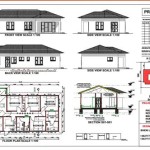Greenhouse Planting: A Comprehensive Guide to Essential Aspects
Greenhouse planting offers a controlled environment for cultivating plants, extending the growing season and maximizing crop yields. Understanding the fundamental aspects of greenhouse planting is crucial for successful production.
1. Greenhouse Design and Structure
The design and structure of the greenhouse play a vital role in its functionality. Factors to consider include:
- Roof and Walls: Ensure proper light penetration and insulation.
- Ventilation: Adequate air circulation prevents disease and maintains temperature.
- Benching and Growing Systems: Optimize space and drainage for plants.
2. Climate Control
Maintaining optimal climate conditions is essential for plant growth and productivity. Control the following factors:
- Temperature: Regulate temperature through heating, cooling, or natural ventilation.
- Humidity: Manage humidity levels to prevent disease and promote plant health.
- Light: Provide sufficient light intensity and duration for photosynthesis.
3. Plant Selection and Propagation
The choice of plants depends on the greenhouse environment and intended production. Consider factors such as:
- Climate Compatibility: Select plants adapted to the greenhouse climate.
- Crop Rotation: Plan crop rotations to prevent disease and replenish soil nutrients.
- Propagation Methods: Choose suitable propagation techniques, such as cuttings or seed sowing.
4. Soil Management and Fertilization
Proper soil management and fertilization ensure optimal plant nutrition and growth. Key considerations include:
- Soil Preparation: Create a well-draining and nutrient-rich soil mix.
- Fertilization: Provide essential nutrients through regular fertilization.
- pH Management: Maintain appropriate soil pH levels for nutrient uptake.
5. Pest and Disease Management
Pest and disease control is crucial for maintaining plant health and crop productivity. Implement strategies such as:
- Integrated Pest Management (IPM): Use a combination of biological, chemical, and cultural methods to control pests.
- Disease Prevention: Practice proper sanitation and ventilation to prevent disease outbreaks.
- Monitoring and Early Detection: Regularly inspect plants for signs of pests or diseases.
6. Irrigation and Watering
Proper irrigation practices ensure adequate water supply for plant growth. Consider:
- Watering Frequency: Determine the appropriate watering schedule based on plant species and climate conditions.
- Water Quality: Use clean, pH-balanced water for irrigation.
- Irrigation Methods: Choose efficient irrigation techniques, such as drip irrigation or fertigation.
7. Harvesting and Post-Harvest Handling
Harvesting and post-harvest handling practices ensure the quality and shelf life of produce:
- Harvesting Techniques: Use proper harvesting methods to minimize damage.
- Storage and Packing: Store produce in optimal conditions to maintain freshness.
- Post-Harvest Treatments: Apply appropriate treatments, such as sorting, washing, and cooling, to enhance shelf life.
Conclusion
Successful greenhouse planting requires a comprehensive understanding of the essential aspects discussed above. By implementing these principles, growers can optimize crop yields, improve plant health, and maximize the benefits of controlled environment agriculture.

Advantages Of Growing In A Greenhouse Gothic Arch Greenhouses Blog

Benefits Of A Greenhouse By Jean Vernon Hartley Botanic

Cold Hardy Winter Veggies In A Unheated Greenhouse Millcreek Gardens

Greenhouse Gardening For Beginners Where To Start

Greenhouse Growing For Beginners Jimsmowing Com Au

Growing Vegetables In A Greenhouse One Hundred Dollars Month

What To Plant In Your Summer Greenhouse Gothic Arch Greenhouses Blog

42 Easy To Grow Greenhouse Plants For Beginners Emporium

What To Grow In A Greenhouse Autumn Winter The

Greenhouse Gardening When Is The Best Time To Start Planting Ferrellgas Fuel Life Simply








